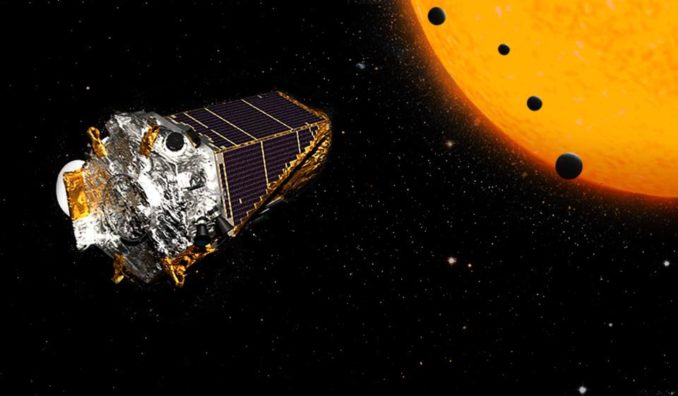
Observations have for the first time clearly revealed the effects of Einstein's general relativity on the motion of a star passing through the extreme gravitational field very close to the supermassive black hole.

NASA’s newest exoplanet-hunting spacecraft has started taking scientific data as of last week, according to a NASA release.

A new analysis of 15 years of data from the Mars Express probe by a team of Italian scientists shows compelling evidence for their being liquid water beneath Mars southern polar region.

The Planck mission launched in 2009 has finally reached its ending point. So far the standard model of cosmology has survived all the tests.

The ESA recently released stunning photos of a Martian storm front, which were acquired by the Mars Express orbiter in April of 2018.

The mysterious surface of Saturn's huge moon Titan comes into gloriously sharp focus in newly released photos captured by NASA's Cassini spacecraft.

This is a new picture of Neptune taken from the Earth. It’s nothing short of amazing.

Over the past 18 months, astronomers have painstakingly tracked a dozen tiny moons that they found circling the giant planet Jupiter.

Orbex, a British-based company with subsidiaries and production facilities in Denmark and Germany, announced development of what it is calling the "Prime" launch vehicle.

You’re looking at the center of our galactic home, the Milky Way, as imaged by 64 radio telescopes in the South African wilderness.

To help us grok the immensity of the cosmos, the European Space Agency has released a remarkable image of space in which every point is an entire galaxy.

Nearly a decade after launching NASA’s Kepler telescope has netted 2,650 new confirmed worlds beyond our solar system. It now has paused its observations after on-board sensors detected it is running low on fuel.

A new image of star cluster RCW 38, an area strewn with young, hot, massive stars, is providing an unprecedented glimpse into a tumultuous region of space located 5,500 light-years from Earth.

In its quest to find extant life in the Solar System, NASA has focused its gaze on the Jovian moon Europa. But scientists believe it is Enceladus that stands the greatest chance of making that next big step.

Results from computer simulations confirm that young Uranus was involved in a cataclysmic collision with an object twice the mass of Earth.